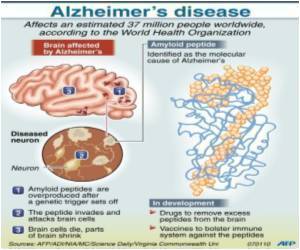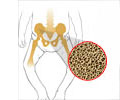
To each the conclusion, Jack Rogers at the University of Melbourne and colleagues, used mouse studies, healthy human brain cells and post-mortems to show that APP's role is probably to flush toxic iron from neurons.
However, in Alzheimer's, the APP's function is sabotaged by zinc, which accumulates in the disease's trademark plaques, reports New Scientist.
Normally, zinc aids neuronal signalling, but as it becomes trapped in plaques, it both disrupts APP's iron-clearing role and denies neurons the zinc they need for signalling.
The outcome is a double-whammy, which sees iron continuing to accumulate and neurons losing their ability to signal appropriately.
Source-ANI













